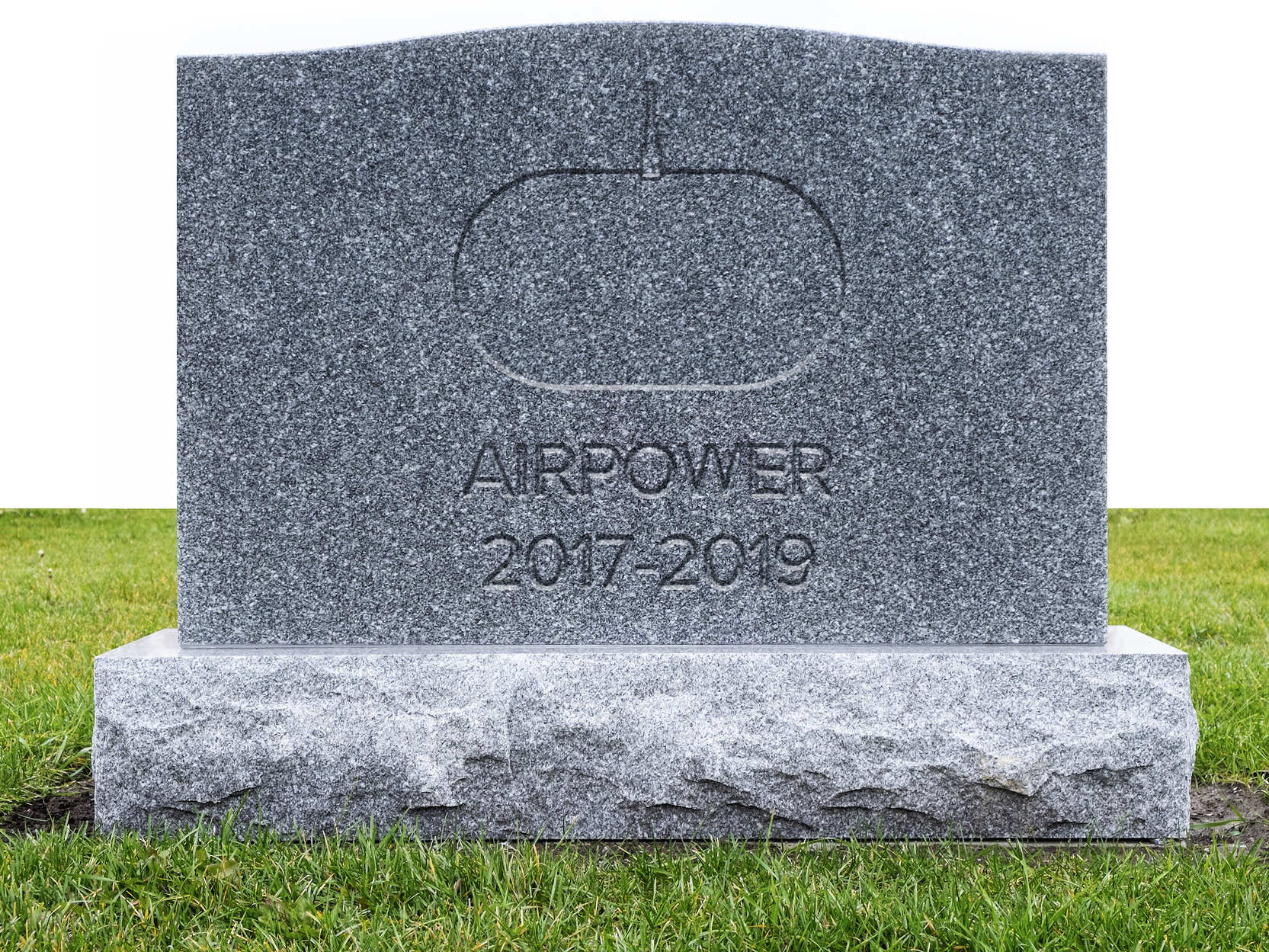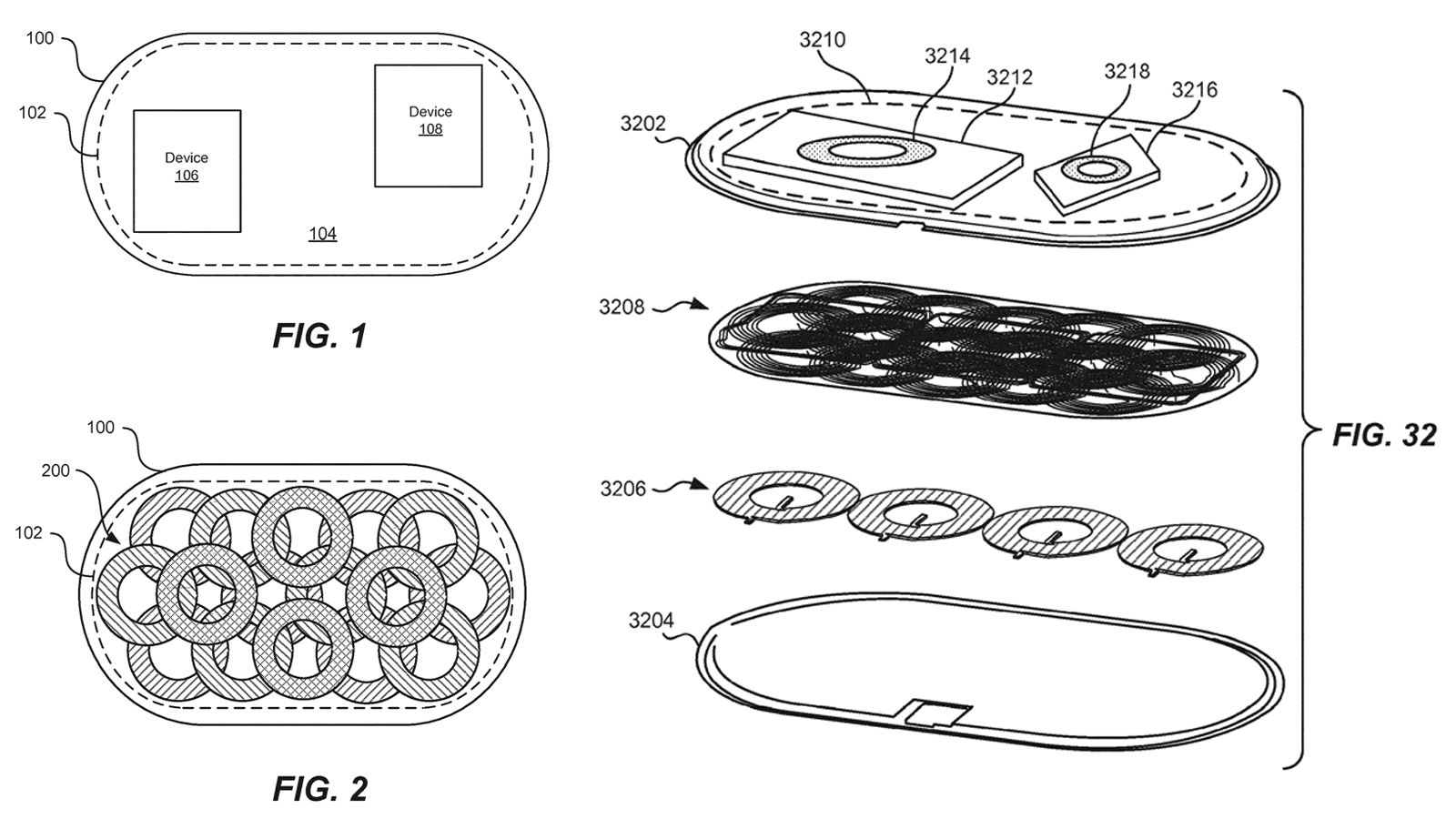What eventually killed AirPower

Quite unexpectedly, Apple canceled the long-awaited AirPower wireless charging mat. The company says that the product could not reach its "high standards", but does not specify for what reason. We have closely followed this issue and can make a conjecture supported by facts on this matter.
For the first time, AirPower was presented to the public in September 2017 during the presentation of the iPhone X. The company promised a single stand for wireless charging that can charge three devices at the same time — for example, iPhone, Apple Watch and AirPods (the headphones just recently got the option of wireless charging).
Apple planned to launch AirPower a year after the iPhone X, in 2018. However, at some point, there were reports of many different delays . The 2018th year went on, rumors about the cancellation of the project grew, especially after Apple completely removed all references to this product from its site a year after its announcement.
')
From 2019, however, there was a glimmer of hope: there were rumors that the production of AirPower was starting up, and that there was a possibility of bringing this device closer to the exit stage. And it came so close that in the beta version of iOS 12.2 - released just 10 days before the cancellation of AirPower - there was official support for the now canceled device. And the second generation AirPods even have a photo of a charging stand on the back of the box.

AirPower was canceled in just nine days, which made us think about what could have happened. After all, the market already has a sufficient number of wireless charges that can simultaneously charge several devices. However, unlike existing floor mats (which are simply three separate chargers arranged in a row in a single package), Apple wanted to take this technology to the next level.
Given all this, we have a theory about why Apple’s wireless charging failed completely, and why it happened at the last moment.
Overheating and interference
Wireless charging uses electromagnetic induction to charge the phone. Coils from the wires are built into the phone and in the charging: charging takes the current from the outlet, drives it through the coil, and creates an electromagnetic field. This field induces an electrical current in the coil of the phone that it uses to charge the battery.
However, the phone is transmitted is not quite clean and perfect electricity. It gives noise that can interfere with other wireless devices. Therefore, the US Federal Communications Commission and regulators from other countries set strict limits on wireless emissions.
Noise from one coil may not be a problem, but each coil produces a slightly different electromagnetic wave. When applied, their interference amplifies these waves. Just as ocean waves in collision combine altitude, so radio waves can combine intensity in interaction.
It is extremely difficult to control these overlapping harmonic frequencies , and the more coils you try to integrate, the harder it is to do. Judging by the patent, Apple had an ambitious plan to use far more coils than others on the market.

According to rumors, Apple considered the option with the number of coils up to 32 - the figure to the patent shows 16 pieces.
Other mats for wirelessly charging multiple devices have two or three coils in a row, but all you have to do is punch the phone a little to find the right spot over one of the coils and start charging. In its AirPower, Apple tried to create one large charging surface using overlapping coils, which would allow multiple devices to be placed anywhere in the mat. However, there are several difficulties.
We asked an engineer with experience in creating wireless charging systems, what obstacles worked at Apple to overcome. “Over time, these harmonics add up and very powerful signals appear in the air,” explains William Lampkins, technical vice president, O & S Services . - And this may be difficult - for example, such radiation can stop someone's pacemaker if it is powerful enough. Or close someone's hearing aid. " If the Apple machine harmonics scattered in all directions, perhaps AirPower could not pass the tests of US or EU regulators.
Part of the surprise of canceling AirPower is how all of this happened suddenly and at the last minute, right in the wake of the AirPods 2 release. However, Lumpkin says this happens sometimes. He suggested that Apple managed to get AirPower to work in the laboratory: “Well, that's how it happens when you can first get the device to work. No one pays attention to electromagnetic interference until the very end. ” The rules of the Communications Commission for wireless charging are very strict, and limit the radiation power at 20 cm from the device at 50 mW / cm 2 .
A few months before we heard rumors about problems with overheating AirPower, and it fits perfectly into our theory. To power multiple devices with a large array of coils would require a lot of energy. "Overheating means too much current in the coils, which means that they are trying to increase the level of energy," says Lampkins. “I suppose they are trying too hard to pump the power of the field, as a result of which the device overheats.”
Apple drove itself into an electromagnetic angle. They wanted to do something that was physically possible - and in the laboratory it worked for them - but could not fit into the inexorable requirements for the transmission of electromagnetic waves, designed to protect us from our gadgets.
Source: https://habr.com/ru/post/446350/
All Articles